This blog post is the follow-up post about this older post from 2016: Finding an optimised keyboard for Malagasy
I wrote that post back in November 2016 about how inefficient the AZERTY keyboard — currently in use by most Malagasy people — was. It has an abysmal performance and may even lead to finger joints problem after extensive use over the years.
Feedback from first versions
After spending a few days iterating over layouts, I came up with a first version that scored really well with the test corpus, and even used it for a couple years, but besides it being not popular at all, it suffered some flaws:
- Accented characters in Malagasy are OK, but accented letters in French, which is also used by most Malagasy people using a computer, were severely lacking
- Programming was hard as some characters such as the anti slash were not present.
- Money symbols like the Euro or the Pound were absent. While not a major inconvenience, their absence can sometimes be felt when writing in about the UK (use of Pound Sterling) or France (which uses Euro), for instance.
- The characters “<” and “>” were not type-able on certain keyboards, including the laptop I was using back in 2017.
After having spend a couple years getting used to the first iteration and noting its flaws, I have come up with another version, which takes some improvements suggested by Ian Douglas (see comments on the older post).
Version 3
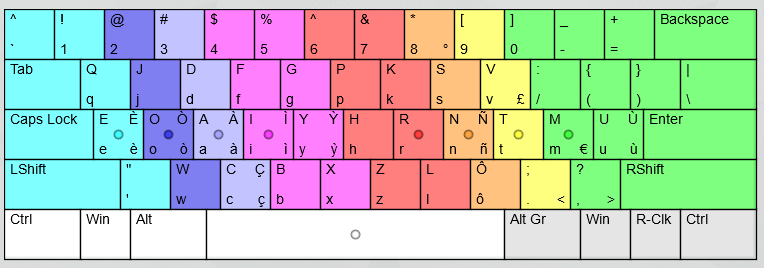
So this Keyboard basically is a major change compared to the previous iteration, as several keys have been moved or swapped. Most notably
- The U key is now moved to the right-hand side of the keyboard. U is not used in native words
- The Apostrophe and Double quote has been moved to the left side of the keyboard. The most common word using the apostrophe is amin’ny which would allow us here to type it by alternating left and right hands.
- the accented O has its own key. Like accented letters in French, Ô is not a considered a separate letter but it’s often used.
Analysis Results
When accessing the analysis results, we have the following winners:
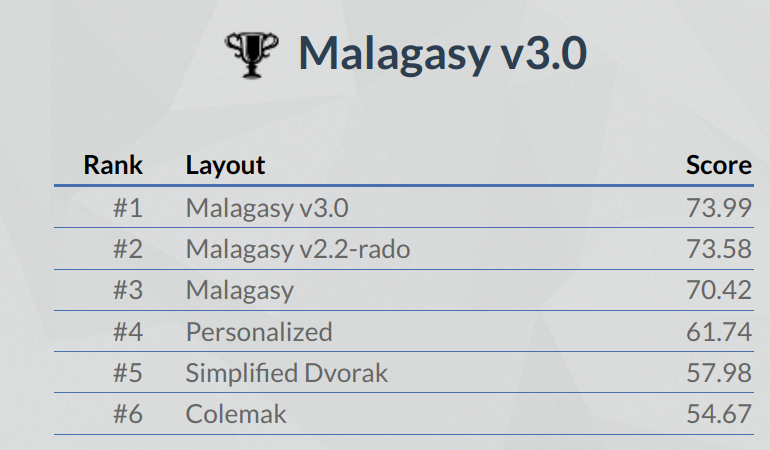
The heatmap for the Version 3 is as follows:
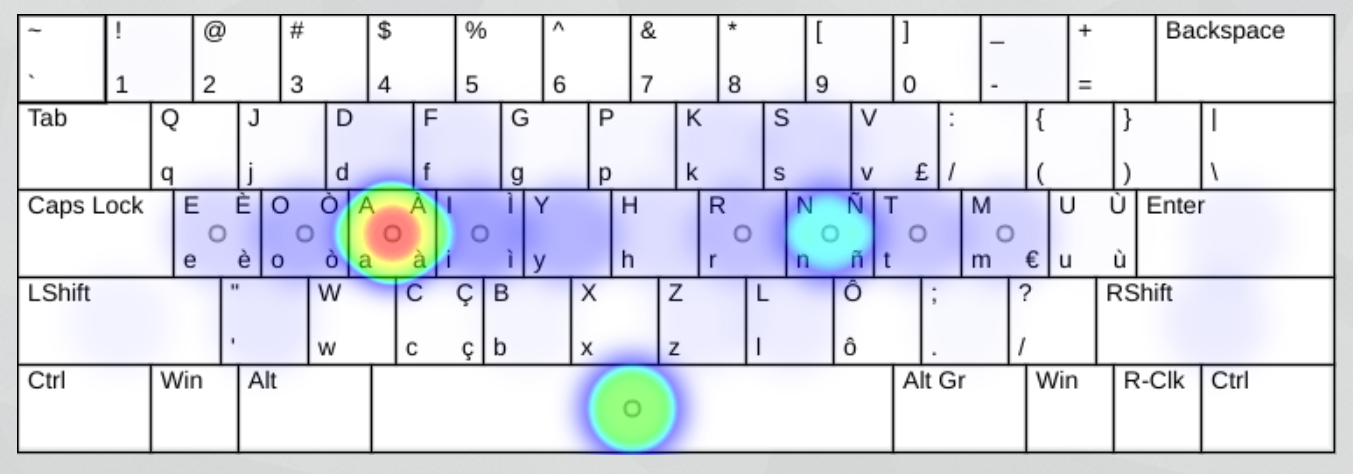
The row usage is as follows
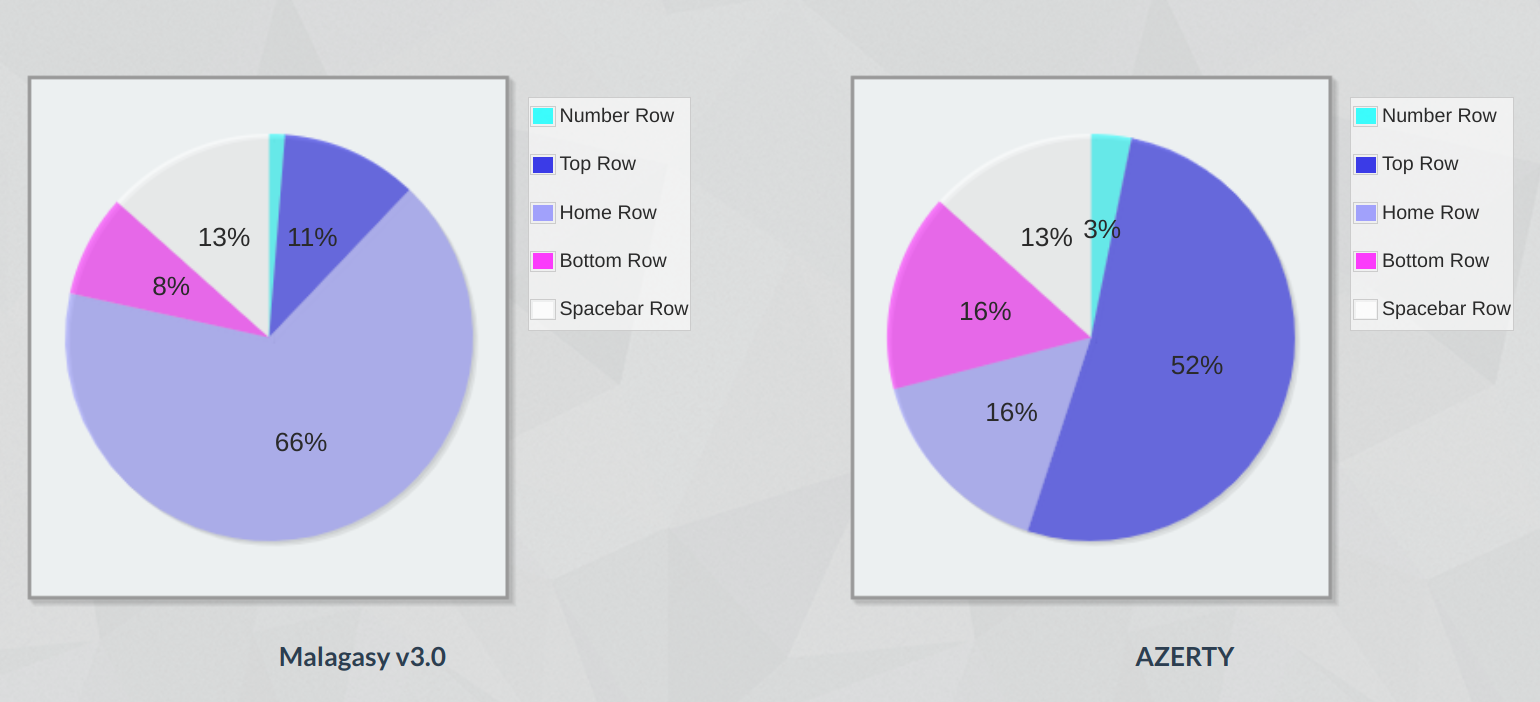
Below is the hand usage for our sample text based on Sarasara Tsy Ambaka. It heavily favours the left hand against the right hand as Malagasy uses a lot of vowels, which are all on the left hand side of the home row right below the user’s fingers.
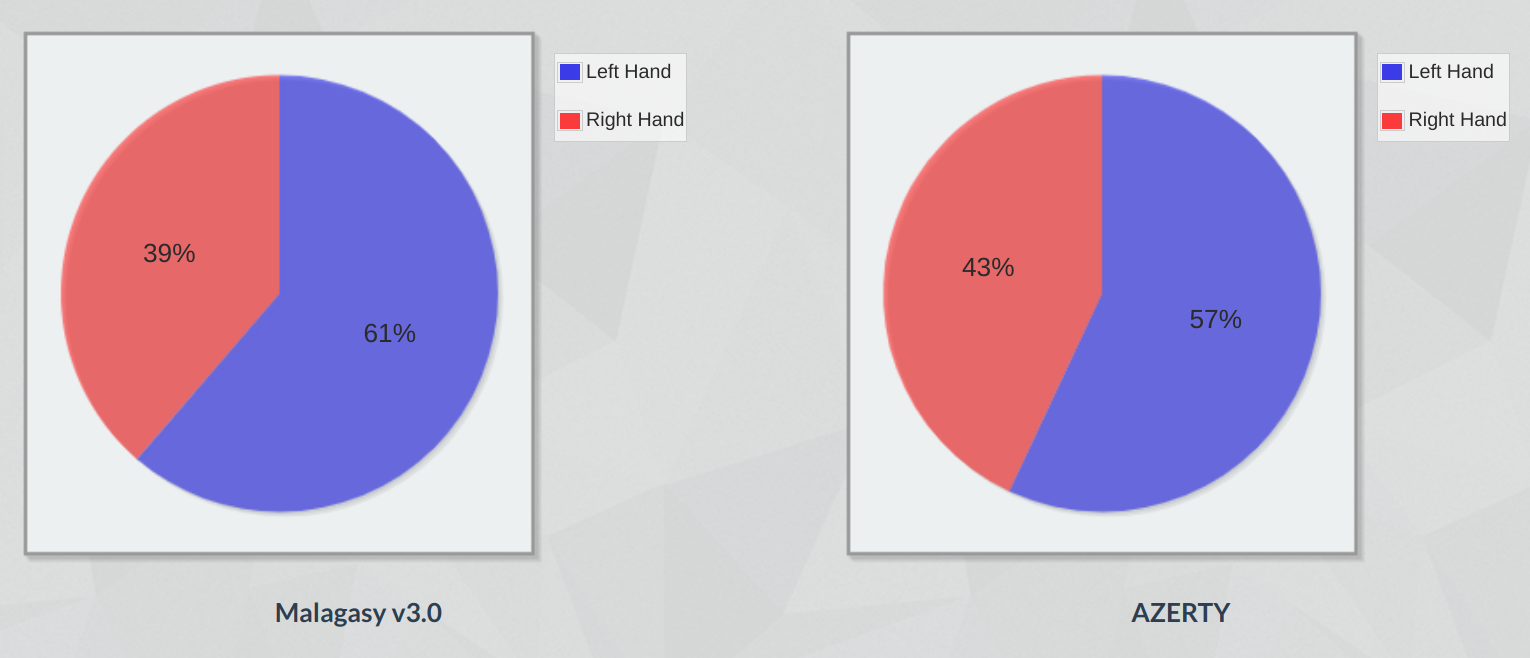
The piechart above is obtained by having the left thumb hit the spacebar. We can swap that with the right thumb and have the result below for the Malagasy v3:
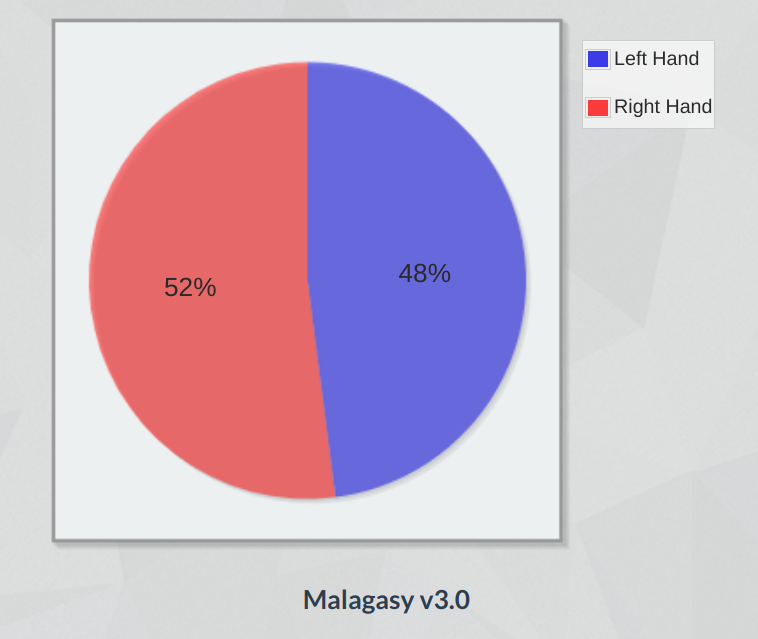
Hand usage is not a lot more balanced. Space bar accounted for roughly 13% of all keyboard hits in the sample text I used.
On multilingual typing
The most used language pair in Madagascar when it comes to multilingual typing is Malagasy and French, or more likely French and Malagasy. Office workers use most often French as a work language, and use Malagasy for other everyday communication. When it comes to bilingual usage, here is how the Malagasy v3.0 keyboard performs. The tests were made with a 5,000 character text in French appended with another 5,000 characters in Malagasy. Informational density per character is higher in French than in Malagasy: in French we have an average of 6 characters per word whereas in Malagasy we are closer to 10. Nevertheless, the passage has been truncated.
Here are the detailed results. I will present the most interesting parts here.
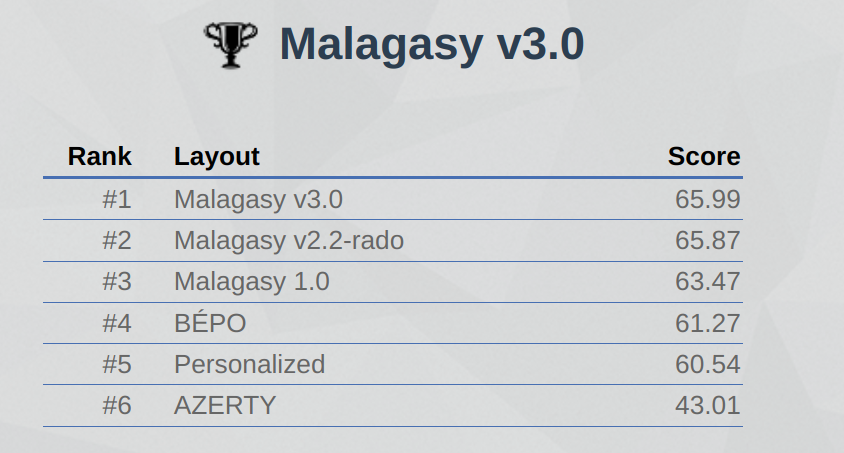
The v3 is still the winner here, but as you can see, the difference between the winner and the second no longer seem to be significant, so let’s use another metric:
In the table above, we have the distance covered by our fingers dancing on the keyboard, in centimetres, the less, the better.
Let’s start with the loser here, the AZERTY layout (will this AZERTY-bashing post ever stop?), with over 33,000 centimetres for ten thousand characters, where the left pinky and the index fingers travel a lot. If these were metres and not centimetres, that’s 75% of a marathon.
A surprising-but-not-so-surprising contender here is the BEPO layout which already has some notoriety and nice total distance of 17,241 centimetres which makes writing 10,000 characters look less like a marathon and more like 40%, of a marathon. Good runners could run 40% of a marathon on a weekday after a day of work.
Malagasy v1.0 also gets away with 16,765 cm
Malagasy v2.2 and v3 are all quite close to each other with respectively 15,901 cm and 15,299 cm. Version 3 has some nice keymaps allowing it to type some keys that were absent in version 2.
On shortcuts
We office workers like to use shortcuts. The most famous being Ctrl+A (select all), Ctrl+C (copy), Ctrl+F (search in file), Ctrl+K (cut line after cursor), Ctrl+N (new file), Ctrl+S (save), Ctrl+U (cut line before cursor), Ctrl+V (paste), Ctrl+X (cut), Ctrl+Z (cancel last action),
Where do we stand about these for the Malagasy Keyboard v3?
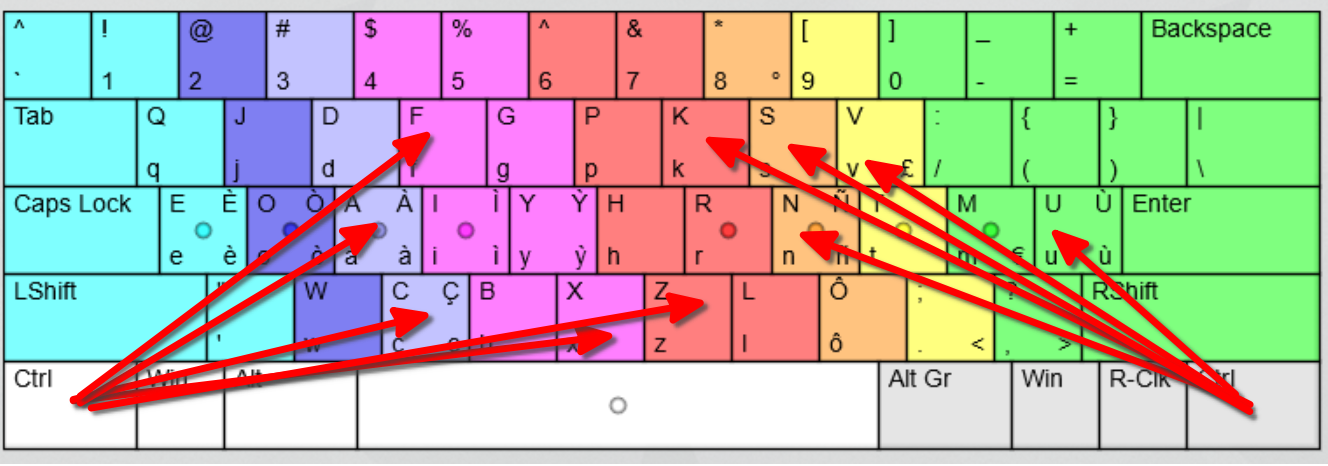
Well, here we gotta use both control keys, of use two hands if we don’t want to do that.
Conclusion
Finding the optimal combination is very much a work-in-progress, but the version 3 has already come a long way. I especially need to find a way to re-balance right hand and left hand usage, but that won’t be easy given how we use vowels.
Leave a Reply